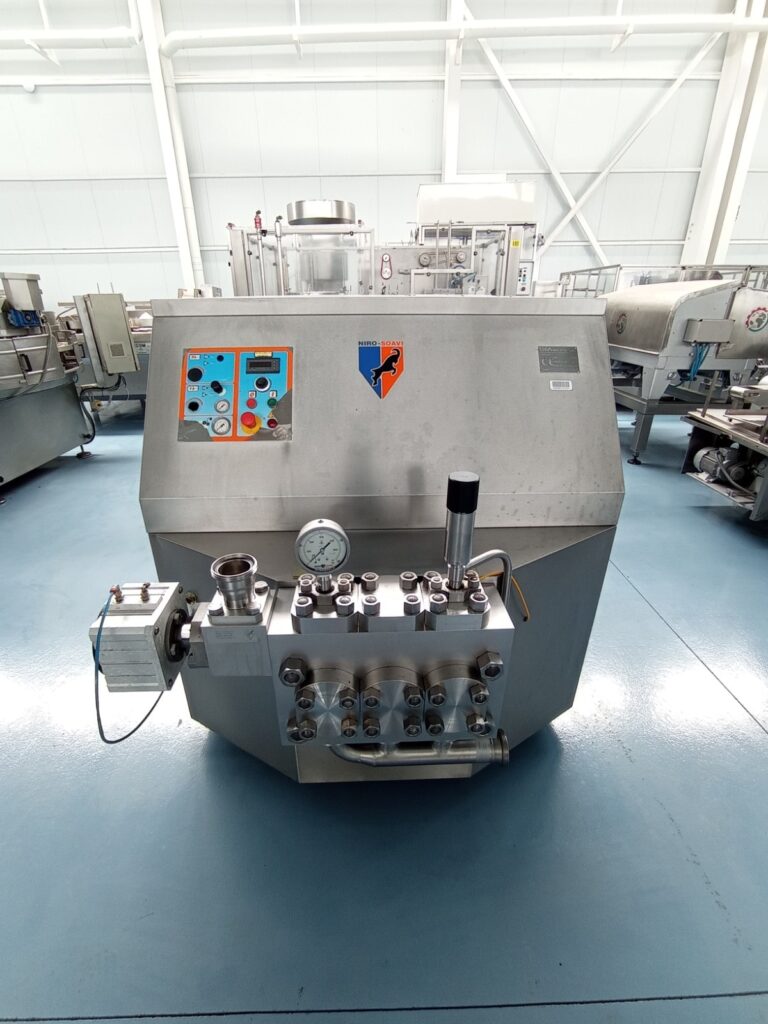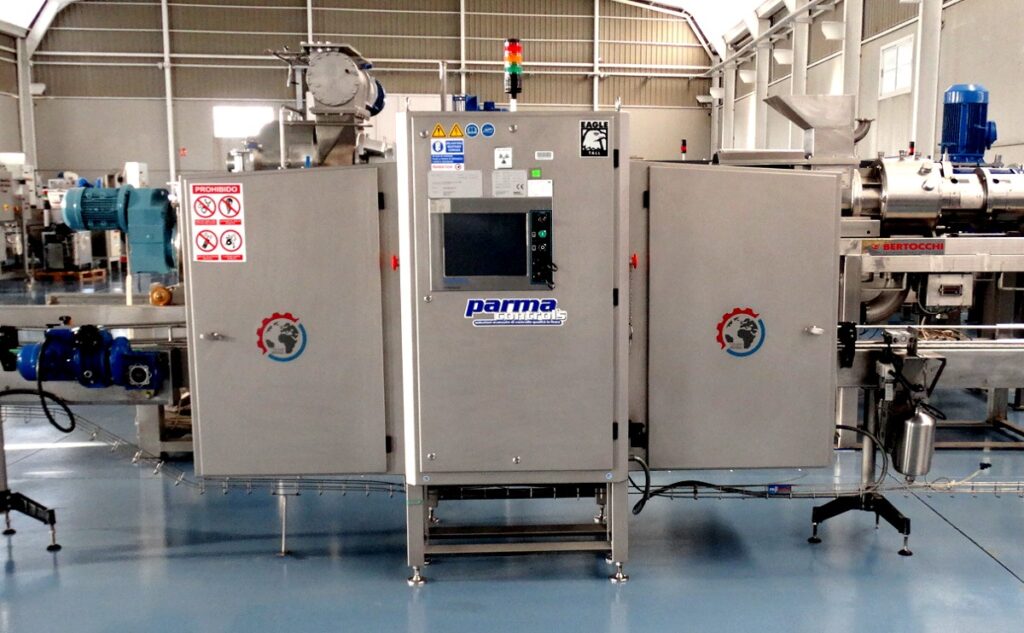At Maquinaria Tomás Guillén, we all have a defined aim – providing solutions for all our customers projects.
After working together in the design of a line or in the search of the machine that best meets our customers’ needs, an important part of the project remains: the shipment from our facilities in Lorquí to our customers’.
The transport of machinery for the food and beverage industry is very diverse. Our customers come from the five continents and our projects vary from individual machines, up to big lines or even complete factories.
For this reason, in our daily operations we work with all the different existing transports and today we would like to share with our readers some of the aspects to keep in mind to make sure our logistical operations are successful.
ASPECTS TO KEEP IN MIND IN THE ROAD TRANSPORT OF INDUSTRIAL MACHINERY
One of the positive points of moving machinery by road is the convenience, since there are less parties involved in these operations than in sea transport.
To discuss this type of transport, we will talk, on the one hand, about standardized cargo and, on the other, about out-of-gauge cargo:
ROAD TRANSPORT OF STANDARDIZED CARGO
We define standardized cargo as the goods that can be transported in regular means, by reason of dimensions or weight.
The most common way of shipping machinery by road are tarpaulin trucks.
In our sector, we will definitely forget about reefer trucks. Even if they are not generating cold, most likely the loading, securing and unloading of the machines in the truck will become a serious headache.
The inner dimensions of a tarpaulin truck are the following:
- Length:13’62 metres
- Width: 2’48 metres
- Height: 2’7 metres
When it comes to the height, the so-called “mega” trucks can be the solution of many problems. This type of truck allows to lift the roof to load machines up to 3 meters high.
ROAD TRANSPORT WITH FULL LOADS
When the number of equipment so requires, we hire complete trucks for the loadings.
The Maximum Authorized Mass (MAM) is the maximum weight a truck can haul – the addition of both the truck and the cargo weights.
The Maximum Authorized Mass will depend on the number of trailer axes. For instance, in 3 axes trailers, the MAM is 24 tons in Spain.
Since there are only one loading place and one unloading place, this type of transport is less expensive than less-than-load (cost per meter).
As a strength, full loads allow us to well secure the goods before the truck leaves our facilities.
We need to bear in mind that every machine in different. Their anchoring points and weight distribution are extremely diverse and drivers may be not familiar with them. That is why it is better not to move the machine until the final destination.
ROAD TRANSPORT WITH LESS-THAN-LOAD
When we ship single machines, it is not necessary to hire a complete truck, so we go with less-than-load.
Less-than-load or groupage is the type of transport in which goods of different shippers and receivers are carried in the same truck.
Less-than-loads may be a direct service or include transshipments in logistic warehouses. In the second case, our ties do not arrive at the final destination.
For that reason, we decide to palletize (if possible) and plastic-wrap the equipment. In this way, we make our collaborators’ work easier and we also protect the machines from possible scratches or dents caused by the good nearby during the transport.
ROAD TRANSPORT OF OUT-OF-GAUGE CARGO
When the dimensions and/or weight of the cargo exceed the truck limits mentioned above, we work with platforms or flatbeds.
In Maquinaria Tomás Guillén, we have our own truck fleet for special transport, as well as all the permits required for the haulage of out-of-gauge cargo at both national and international level.
Permits are classified according to the maximum dimensions and weight of the cargo and vehicle.
In Spain, we may find for example:
- Generic Authorization (length: 20,55 metres; width: 3 metres; height: 4,5 meters; 45 tons)
- Specific Authorization (length: 40 metres; width: 5 metres; height: 4,7 metres; 110 tons)
- Exceptional Authorization (when the cargo plus vehicle exceeds any of the limits of the specific category).
Depending on the case, the regional or the national authorities grant these permits.
ASPECTS TO KEEP IN MIND IN THE SEA TRANSPORT OF INDUSTRIAL MACHINERY
Container sea transport accounts for the majority of the trade flow globally.
It allows to cover greater distances of thousands of kilometers at a quite reasonable price.
In the same way, this type of transport makes transactions much easier with the use of INCOTERMS.
SEA TRANSPORT OF STANDARDIZED CARGO
Containers for standardized cargo are roughly divided in two types: 20 feet and 40 feet.
- 20 feet: length 6,05 metres; width: 2,43 metres; height: 2,59 metres
- 40 feet: length: 12,19 metres; width: 2,43 metres; height:2’59 metres/2’89 metres in the case of High Cube containers
We need to bear in mind that the usable inner dimensions are a bit lower.
Pay attention to the maximum weight they can hold as well. Even if the 40 feet is physically twice the size of the 20, it can take approximately 5 tons more (21,8 tons the 20 feet against 26,68 tons the 40 feet).
SEA TRANSPORT OF COMPLETE LOADS
Just like it happened with trucks, loading full containers allows us to secure the cargo.
In relation to the ports and customs, the operations are much easier since we are only dealing with one shipper and one receiver of the goods.
SEA TRANSPORT OF LESS-THAN-CONTAINER (LTC) LOADS
In the same way, LTCs are also an option in sea transport.
After being usually picked-up with box trucks, goods are taken to warehouses where containers are consolidated. For that reason, we would recommend the construction of treated lumber crates for the transport if possible.
SEA TRANSPORT OF OUT-OF-GAUGE CARGO
So often, our machines exceed the dimensions of standard containers.
In these cases, 2 options are at our disposal: FLATRACK containers and MAFI platforms.
FLARACK containers are open without side walls and roof. With them, we are able to load out-of-gauge machines in our facilities.
On the contrary, the second option implies the loading in a flatbed truck. The machine is then transferred to a MAFI platform at the port. The wheels on the MAFI platforms allow the loading and unloading from the vessel.
ASPECTS TO KEEP IN MIND IN THE AIR TRANSPORT OF INDUSTRIAL MACHINERY
Because of the obvious reason of volume, air transport of industrial machinery is extremely restrictive.
We just can build wooden crates for a small number of machines if we want to ship them by air.
However, air transport has the advantage of fastest deliveries. In the same way, it is perfectly suitable for the use of INCOTERMS.
MAQUINARIA TOMAS GUILLÉN, 5 REASONS WHY WE ARE EXPERTS IN MACHINERY TRANSPORT AND LOGISTICS
Transport is an additional service we offer, our customers decide if they want us to hire it or not.
If you wish to count on us for this, you should know you are in good hands.
We tell you why:
1- WE ARE VERY FAMILIARIZED WITH THE TRANSPORT SECTOR
We manage transports at both national and international levels on a daily basis. Because of that, we are very aware of all the challenges in the current scenario of rising fuel prices.
Plus, we have a deep knowledge of all transport, custom, bank documents… This is how we avoid any surprise that could delay the logistic operations and generate additional costs.
2- WE KNOW OUR MACHINES INSIDE OUT
As we mentioned before, all of our machines are different in terms of shape, size, weight, etc… This is why each and every piece has to be secured in a certain way.
Our team perfectly knows it. You can be sure machines will arrive at the destination in optimum conditions.
3- WE WORK WITH THE BEST TRANSPORT COMPANIES AT BOTH NATIONAL AND INTERNATIONAL LEVELS
Over our 40 years in the market, we have worked with many transport companies and freight forwarders.
We know which ones are more efficient in and outside Spain, depending on the regions, countries and routes.
4- WE HAVE STAFF FULLY DEDICATED TO TRANSPORT AND LOGISTICS
Some of our workers, fully dedicated to transport and logistics, will negotiate prices and will always find the best solutions for your operations.
In the same way, we are also logistically ready for all types of loadings. All our loading docks, cranes, heavy forklifts… are at our customers disposal. By doing so, we don’t need to hire external companies and we keep costs low.
5- WE ADVICE OUR CUSTOMERS AND ADAPT TO THEIR NEEDS
All of that knowledge translates into a very simple aim: reducing the costs of the operation.
A good management of international transport may save thousands of euros, so it is important to pay attention to the counselling.
We will work together closely so the transports run smoothly. This way we will focus on what really matters: the machines.




